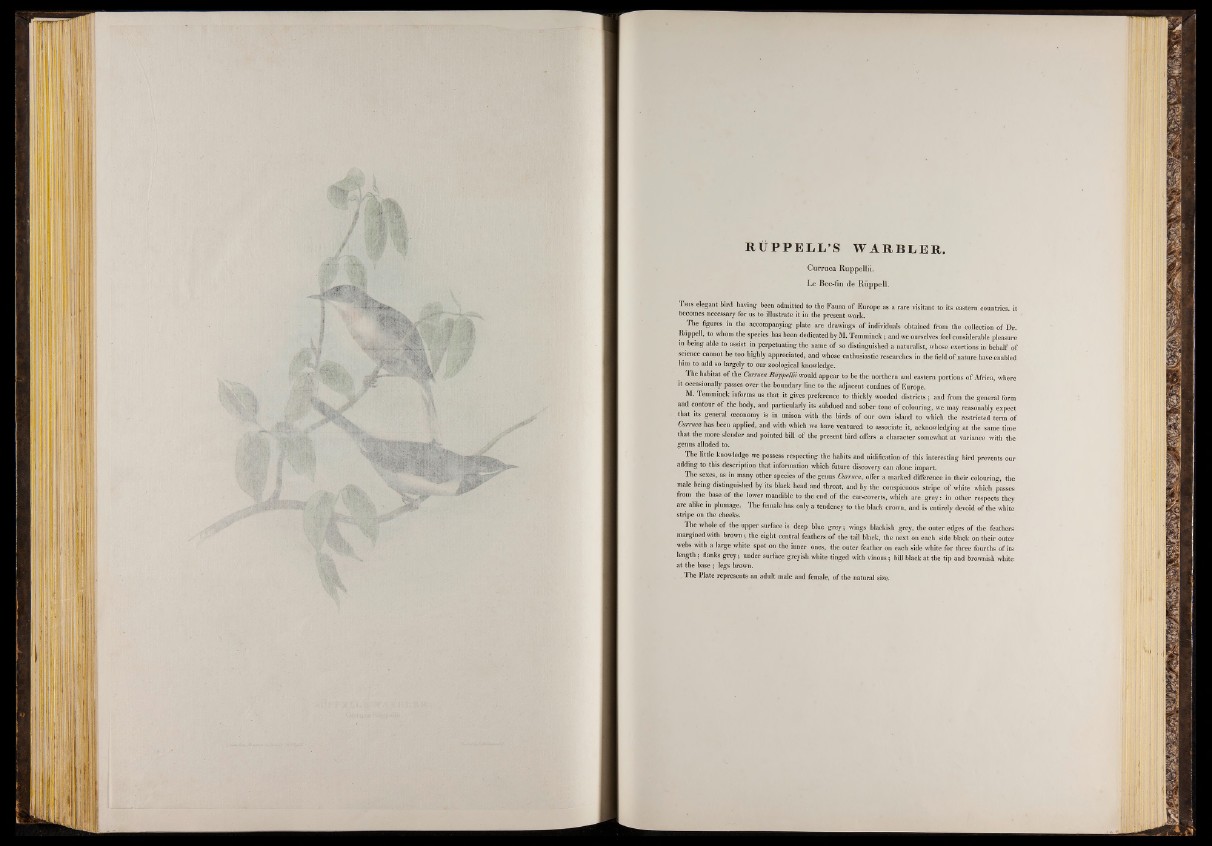
R U P P E L L ’S WA R B L E R ,
Curruca Ruppellii.
Le Bec-fin de Riippell.
T h is elegant bird having been admitted to the Fauna of Europe as a rare visitant to its eastern countries, it
becomes necessary for us to illustrate it in the present work.
The figures in the accompanying plate are drawings of individuals obtained from the collection of Dr.
Riippell, to whom the species has been dedicated by M. Temminck; and we ourselves feel considerable pleasure
in being able to assist in perpetuating the name of so distinguished a naturalist, whose exertions in behalf of
science cannot be too highly appreciated, and whose enthusiastic researches in the field of nature have enabled
him to add so largely to our zoological knowledge.
The habitat of the Curruca Ruppellii would appear to be the northern and eastern portions of Africa, where
it occasionally passes over the boundary line to the adjacent confines of Europe.
M. Temminck informs us that it gives preference to thickly wooded districts ; and from the general form
and contour of the body, and particularly its subdued and sober tone of colouring, we may reasonably expect
that its general (economy is in unison with the birds of our own island to which the restricted term of
Curruca has been applied, and with which we have ventured to associate it, acknowledging at the same time
that the more slender and pointed bill of the present bird offers a character somewhat at variance with the
genus alluded to.
The little knowledge we possess respecting the habits and nidification of this interesting bird prevents our
adding to this description that information which future discovery can alone impart.
The sexes, as in many other species of the genus Curruca, offer a marked difference in their colouring, the
male being distinguished by its black head and throat, and by the conspicuous stripe of white which passes
from the base of the lower mandible to the end of the ear-coverts, which are grey: in other respects they
are alike in plumage. The female has only a tendency to the black crown, and is entirely devoid of the white
stripe on the cheeks.
The whole of the upper surface is deep blue grey; wings blackish grey, the outer edges of the feathers
margined with brown; the eight central feathers of the tail black, the next on each side black on their outer
webs with a large white spot on the inner ones, the outer feather on each side white for three fourths of its
length; flanks grey; under surface greyish white tinged with vinous; bill black at the tip and brownish white
at the base ; legs brown.
The Plate represents an adult male and female, of the natural size.